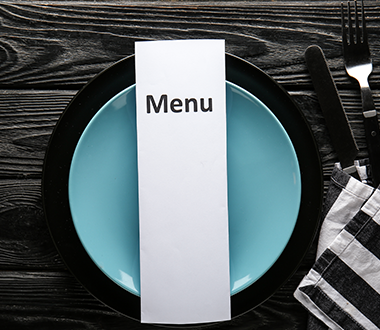The Truth Lies in Wine: 10 Tips on How to Create a Successful Wine List for Your Restaurant
It is no secret that wine can be the key to a restaurant's success. However, the real challenge lies in creating a successful wine list that can appeal to different palates and complement the dishes that you offer. Here are a few tips to help you create an exceptional wine list for your restaurant.
1. Understand Your Customers
Before you even start to create a wine list, think about your customer preferences and taste. Not all wine lists will be successful in every restaurant. Wines that are sold well in gourmet restaurants do not have to be equally prevalent in restaurants with less demanding customers.
2. Selection and Variety
The very first step in the process of creating a wine list is to choose wines. The selection should be broad enough to satisfy the different tastes of your customers. You can also incorporate local wines, which are unique for your specific location or you can focus on good international wines. However, it is proven that a customer can only remember up to 3 or 4 wines from one page. Therefore, you should focus more on quality than quantity.
3. Clarity and Organization
Wines should be organized from the lightest to the most rich in flavor. The structure of a wine list should follow this order:
- House wine from sparkling, white, resé, red to sweet or fortified.
- Sparkling wine from Slovak sects to other sparkling wines /Franciacorta, Prosecco, Cava, Crémant/.
- Campagne from basic non-year-olds to prestige vintage.
- White wines according to the country of origin from the youngest to the oldest ones, from the lightest ones to the most rich in flavor, and from dry to more sweet ones.
- Rosé (the same structure as white wines)
- Red wines (the same structure as white wines and rosé)
- Natural sweet wines
- Fortified wines

4. Creating Harmony with Food
Ideally, the wines on a wine list should complement the dishes on the menu. Wine can enhance the taste of food and create a more complex gastronomic experience for the customer. When choosing, well-trained staff needs to be able to assist the customer based on their expectations. A sommelier or waiter should listen to their preferences and offer the option of a small tasting before the customer orders a full glass.
5. Prices and Margins
When selecting wines, it is important to keep the pricing policy in mind. Prices should be set in a way that considers margins while also being acceptable to customers.
6. Staff Education
Your wine list may be perfect, but if your staff doesn't know how to properly present it and recommend wines, all the effort for perfection can be in vain. Waiters and waitresses need to understand all the wines on the list so that they can provide customers with information and recommendations.
7. Design and Presentation
Design and presentation are equally important as the content of the wine list itself. The list should be easy to read, well-organized, and reflect the style and ambiance of your restaurant. Visual elements can also assist customers in selecting wines. Avoid torn pages, greasy stains, small font sizes, and other imperfections that can spoil the visitor's impression.
8. Integration of Technology
With the rise of technology, wine lists are starting to be digitized. Digital wine lists can give customers more information about wines, such as links to winery websites, reviews, and even videos on how the wine is made. Digital cards also allow easy and quick menu updates. Communication with visitors can be more interactive compared to a traditional paper menu, which can also be beneficial.

9. Monitoring and Adapting to Trends
Wine is a dynamic market, and new trends are constantly emerging. It could be the growing popularity of organic production, new grape varieties, or wines from lesser-known regions. It is important to stay connected with what is happening in the world of wine and adapt to new trends.
10. BONUS TIP: If your restaurant has a sommelier, the wine list can also include their personal selection of a few wines that they consider interesting.
Creating a successful wine list is an art that requires not only knowledge about wines but also an understanding of your customers, the market, and the current trends. We believe that these tips will help you create an exceptional wine list that will be a benefit to your restaurant and customers.
Don't forget to subscribe to our newsletter for more tips and advice from different areas of the business world.



